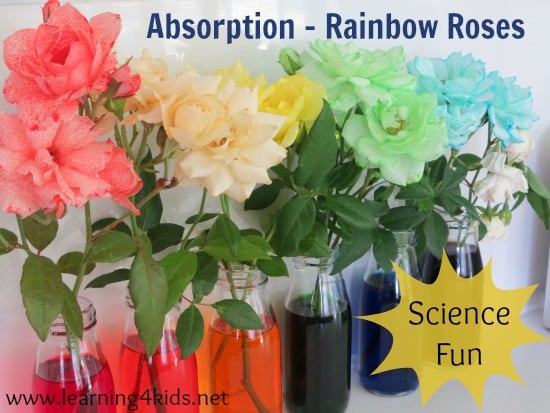
Placing white roses into coloured water is a great science activity to demonstrate absorption. Children will be amazed and excited to see the changes developing in the petals of the flowers. It is a great learning opportunity to explore the concept of absorption, promote scientific thinking skills such as predicting, observations, reasoning and so much more!
What you will need?
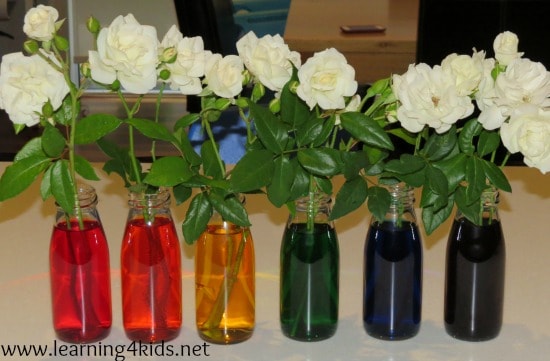
You will need white roses (you can use other flowers such as carnations or celery which works really well), food colouring, water and glass jars. Our gorgeous neighbours have the most beautiful white roses and we have always admired them. We were lucky enough to cut a few for our experience……thank you Erin and Brendan!
Let’s Play
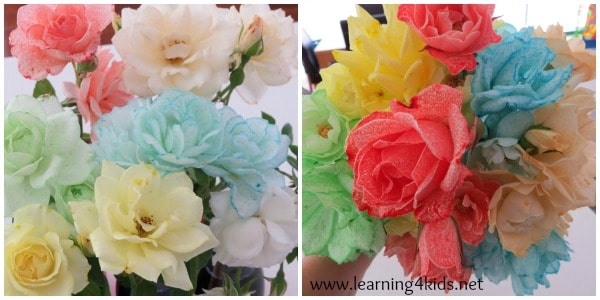
We observed our roses over a few days and watched as the changes took place. The longer the roses were in the coloured water the darker the rose petals became. Miss 7, Miss 6 and Miss 3 had so much fun touching, looking, smelling and arranging the flower jars to create a bouquet of rainbow roses. It is AMAZING to see the effects of the coloured water as it is absorbed through the petals of the roses, it leaves behind vein like markings of colour on the petals as the coloured water moves through the capillaries of the petals. There are some close up photos of the coloured veins below.
Let’s Learn
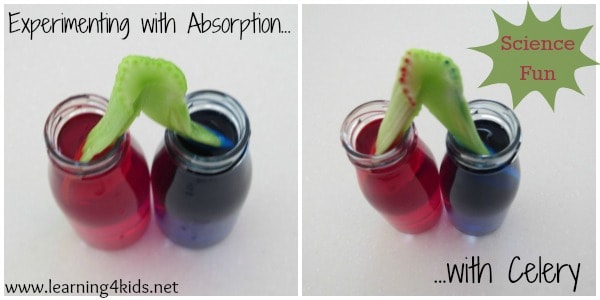
Celery has always been well known to be a great object to demonstrate absorption. We thought we might try something different and place 1 stick of celery cut almost all the way down the middle and place the separated ends into coloured water. We discovered that the red and blue food colouring was best for creating the darkest petals in the white roses, so we chose these 2 colours for this experiment.
Interesting facts about Absorption:
- Absorbency is the capability of a material to take in water or any other liquid.
- Florists often inject coloured dyes into the soil to create more richer colours in their flowers.
- Roots absorb water from the soil and the water travels up the capillaries in the stems to all parts of the plants.
- The capillaries in celery help it to quickly absorb water.
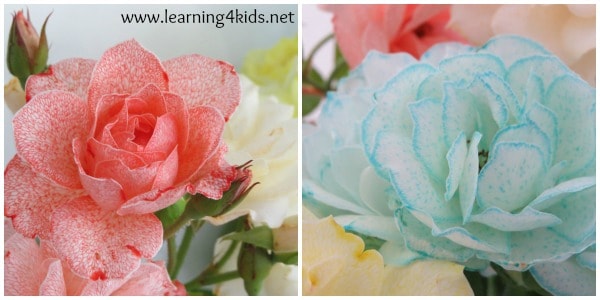
Learning Opportunities:
- Using descriptive words to express ideas and opinions.
- Make connections with real life experiences.
- Promote scientific thinking – predictions, observations, comparison, reasoning, data gathering, experimentation and evaluation.
Find more SCIENCE ACTIVITIES & IDEAS <CLICK HERE>
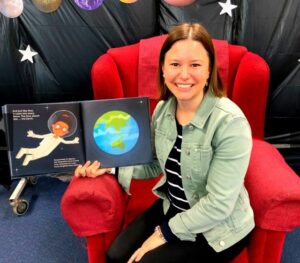
Awesome cant wait to do this
I grew them just for this experiment! 🙂 They look awesome! Well done neighbours! 🙂
Thanks Erin…..and I have finally got around to writing about your beautiful roses! xx